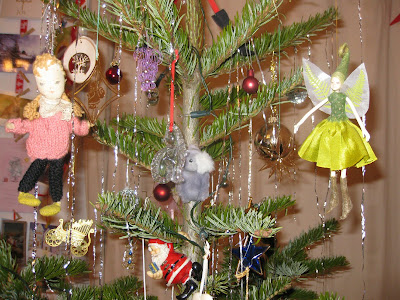 "It snowed in Norwich too". December 2009, by JT
"It snowed in Norwich too". December 2009, by JT
"It’s not so much a “therapy”, as a way of learning new ways of doing things. Andrew Sutton explains the ins and outs of Conductive Education, and what it might do for you and your family."
Yes, I have been reading the ”lost” article that Andrew Sutton told us about in his last blog posting:
It is indeed a very good piece. Perfect as a “hand out” to spread the word about Conductive Education with adults.
But
Although as a printed hand-out it is a perfect starting point for clients setting out on the conductive way of life, as a URL reference for them to read in the Internet it could be very, very misleading.
Let us go back to the very first line that I have quoted above:
“It’s not so much a “therapy”, as a way of learning new ways of doing things.”
Immediately above this sentence is a photograph, a good clear photograph, obviously one that has been chosen with care, possibly by Andrew, but I am absolutely certain that Andrew did not provide the caption for this photograph:
Scroll down, don’t forget to read as you go, or you will miss all the great statements from clients and what both they and Andrew say about Conductive Education.
As you scroll pick out some of the words and phrases used. For example: confidence, living and life, learning, learning to drive, learning skills needed to live life, showing, teaching, encouraging, instructing, understanding, information-sharing and, my favourite sentence of all:
"The highest technological mechanism known is the human mind – and you, your fellow learners, your conductors and your family, will bring this incomparable asset along with you free of charge!"
Not one mention of therapy to be found except when explaining that this isn’t therapy.
So far so good but keep reading and, as you scroll past each photo, put your cursor on it and read the caption. I did this and I cringed more and more the further I got until by the end I knew I just had to post this in my blog.
“A picture of a nurse giving a man with cerebral palsy physical therapy”
“A picture of two people receiving physical therapy”
“ A picture of three patients raising their arms in the air for physical therapy”
Keep on scrolling, don’t forget to read the text, otherwise it looses the impact, until you get down as far as this subtitle:
NOT A THERAPY
Directly below this title is a photograph, with the caption:
It was at this point that I felt like screaming!
Ruined
Oh dear oh dear oh dear!
Here we have the perfect piece to use as a reference for people just about to start out on the road to living a conductive life, absoutely ruined by somebody’s captions.
I had only written about this very problem in my posting yesterday, and here it is again.
In this case it is not the photographs that accompany Andrew Sutton’s article that are the problem, they are well chosen. It is that someone who put the finishing touches to the article on line who has done the damage and, by doing so, succeeded in misleading the readers.
Read the article again, image you are someone with no idea about Conductive Education with adults or children.
What are newcomers to Conductive Education to think?
Perhaps they will ask:
“Are these people doing physical therapy or Conductive Education?”
Or
“It looks different to the physiotherapy that we know so perhaps it is Conductive Education. But, if it is Conductive Education why does the article state emphatically that it isn’t a therapy while all five photographs state emphatically that it is?”
Will there be someone around to answer these questions?
I do hope so.
Apart from “Oh dear, again” I don’t know what to say, but maybe there is something we can do to get those captions changed.




































